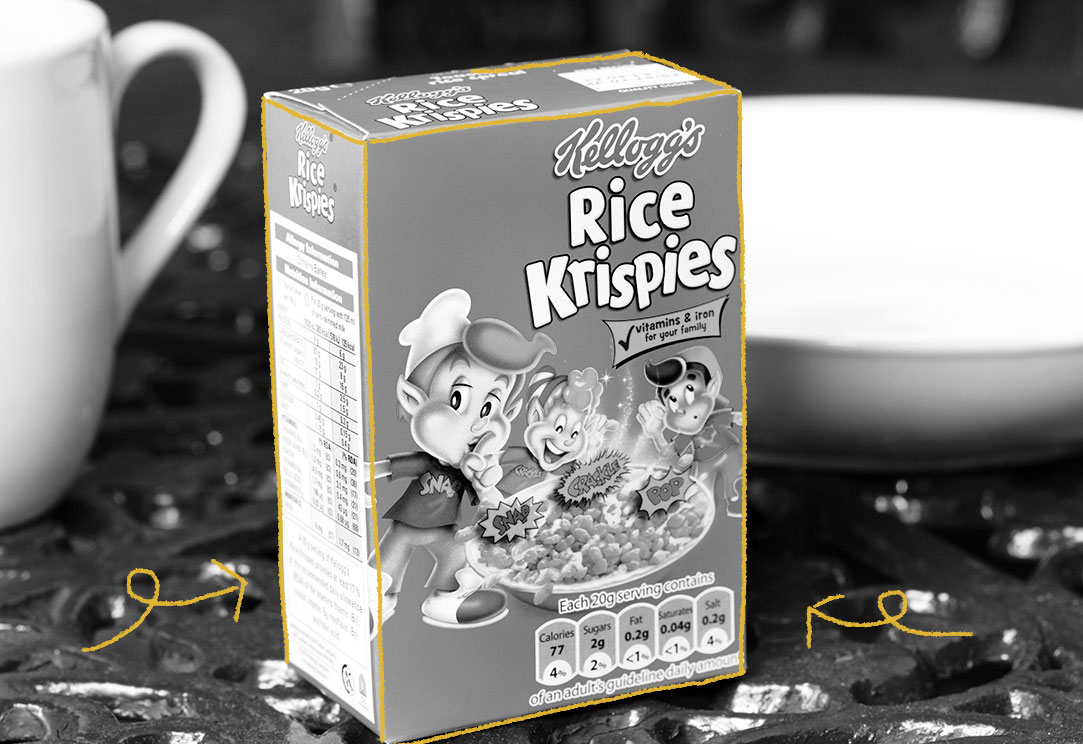In 1927, the R&D team at Kellogg’s began working on a puffed rice cereal. According to company lore, when they presented their idea to W. K. Kellogg, he exclaimed, “You’ve got something there!” In 1928, Kellogg's launched Rice Krispies cereal. They marketed their new product as “The Talking Cereal.” The iconic sound that the cereal emits when milk is added comes from the cooking process used to make it. The rice is cooked at high temperatures, creating pockets of air separated by bonded starch molecules. When liquid is added to the bowl, it puts pressure on the air pockets, and the air inside them presses against the “walls” of the pocket, shattering them like glass and creating the famous noise. In 1932, Kellogg’s capitalized on this unique noise — which they called “snap, crackle, pop” — by creating a trio of mascot elves, aptly named Snap, Crackle, and Pop. They remain highly recognizable to this day and represent Kellogg’s longest-running marketing campaign to date. Notably, the brand has had many marketing successes. For example, a recipe for Rice Krispies treats was added to cereal boxes in the early 1940s and the treats remain a family favorite today. In 1963, the Rolling Stones even appeared in a TV commercial where they played a song that promoted the cereal! Over time, different Rice Krispies flavors have been introduced, but many have been discontinued. (For example, the United States used to have fruity options like Berry Krispies and Rice Krispies with Real Strawberries, but the flavors are no longer on store shelves.) In 2010, Kellogg’s came under fire from the FTC for making misleading health claims about Rice Krispies, which the company then retracted. Today, Rice Krispies remain one of the most successful sellers in the cereal aisle and are considered a classic breakfast option by many Americans.

Your go-to guide for weird history facts
Subscribe to the FREE daily email that makes learning about history fun.


